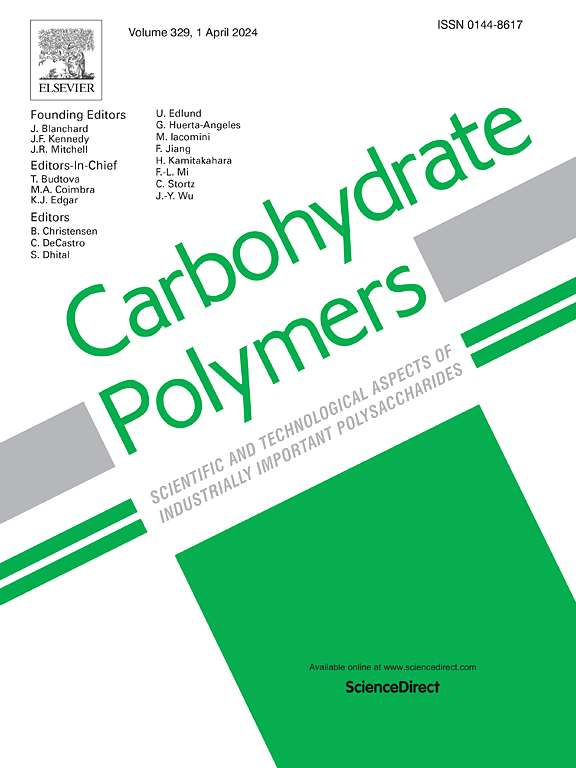Coordinated transcriptional regulation of carbohydrate-related pathways contributes to the difference of starch accumulation between starchy cassava and sugary cassava
IF 10.7
1区 化学
Q1 CHEMISTRY, APPLIED
引用次数: 0
Abstract
Cassava is a significant starchy root crop providing staple foods for millions of people globally. However, the metabolic differences and regulatory mechanisms underlying starch accumulation remain largely elusive in cassava. In this work, scanning electron microscopy, metabolome, and transcriptome were analyzed in parallel between starchy cassava (SC205) and sugary cassava (SM) during storage root (SR) development. Many carbohydrate-related metabolites (including fructose-6-phosphate and glucose-6-phosphate) were differentially accumulated between SC205 and SM. Further analysis unveiled coordinated metabolomic and transcriptomic changes in sucrose and starch metabolism, glycolysis and TCA cycle, lipid metabolism, and lignin and flavonoid biosynthesis during SR development, but with distinct abundance patterns between SC205 and SM. Specifically, bZIP2 could directly bind to the promoters of APL1, ISA1, and GBSS1 and promote their expression levels in SC205, but these interactions were absent in SM. Transient silencing of APL1, ISA1, or GBSS1 resulted in significant decreases in starch contents. Transient silencing of bZIP2 suppressed the expression of APL1, ISA1, and GBSS1, and accordingly, decreased the starch contents. These results suggest a crucial contribution of coordinated regulation of carbohydrate-related pathways/genes to the difference of starch accumulation between starchy cassava and sugary cassava, providing useful information for starch improvement in the future.

求助全文
约1分钟内获得全文
求助全文
来源期刊

Carbohydrate Polymers
化学-高分子科学
CiteScore
22.40
自引率
8.00%
发文量
1286
审稿时长
47 days
期刊介绍:
Carbohydrate Polymers stands as a prominent journal in the glycoscience field, dedicated to exploring and harnessing the potential of polysaccharides with applications spanning bioenergy, bioplastics, biomaterials, biorefining, chemistry, drug delivery, food, health, nanotechnology, packaging, paper, pharmaceuticals, medicine, oil recovery, textiles, tissue engineering, wood, and various aspects of glycoscience.
The journal emphasizes the central role of well-characterized carbohydrate polymers, highlighting their significance as the primary focus rather than a peripheral topic. Each paper must prominently feature at least one named carbohydrate polymer, evident in both citation and title, with a commitment to innovative research that advances scientific knowledge.
 求助内容:
求助内容: 应助结果提醒方式:
应助结果提醒方式:


